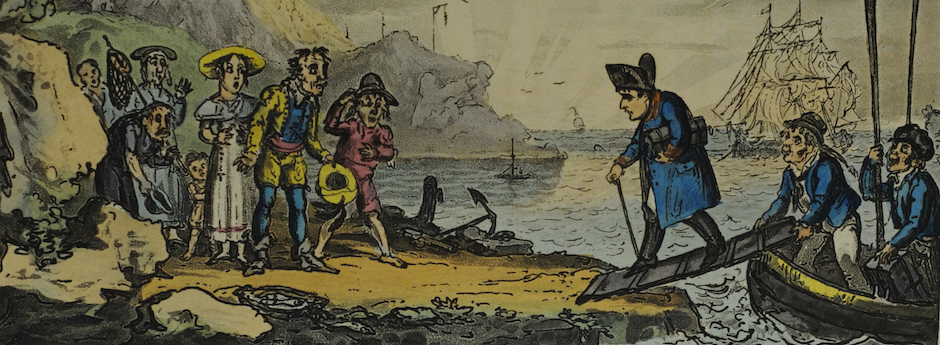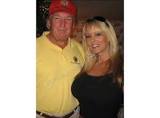JICYMI: That’s DJT and his one-time paramour- and now big headache- Stormy Daniels. Taken in happier (for him) days.
JICYHBLUAR: (Translation: Just In Case You Have Been Living Under A Rock) DJT did-or did not- give Stormy $130,000 in consideration for signing a non-disclosure agreement about their consensual (and yet still sickening) affair.
Things Change Sidebar: I’m sure at that time, $130,000 seemed like BIG bucks to the porn actress. After all, DJT wasn’t president back then and who in their right mind could see into that in the very near future he would be?
Ick. Ugh. Gross.
And up to that point, Stormy was just another bad actress who needed money so badly that she had sex with many, many men on camera.
Ick. Ugh. Gross.
But add this guy into the mix…

Ick. Ugh. Gross.
And you get a non-disclosure agreement banning Stormy from yapping about what went on beneath the sheets with DJT.
The terms “Non-disclosure Agreement” and “NDA” (which btw, I keep mixing up with “NWA”) have been screamed from every tv news portal.
Which got me thinking…
Sure, TBF and I are tight now. We like each other and respect each other and what happens between us stays between us.
For now.
But what happens to privacy and confidentiality if the relationship should end?
I have thought of a remedy.
Basic Nondisclosure Agreement
This Nondisclosure Agreement (the “Agreement”) is entered into by and between _______________ with its principal offices at _______________ (“Disclosing Party”) and _______________, located at _______________ (“Receiving Party”) for the purpose of preventing the unauthorized disclosure of Confidential Information as defined below. The parties agree to enter into a confidential relationship with respect to the disclosure of certain proprietary and confidential information (“Confidential Information”).
1. Definition of Confidential Information. For purposes of this Agreement, “Confidential Information” shall include all information or material that has or could have commercial value or other utility in the business in which Disclosing Party is engaged. If Confidential Information is in written form, the Disclosing Party shall label or stamp the materials with the word “Confidential” or some similar warning. If Confidential Information is transmitted orally, the Disclosing Party shall promptly provide a writing indicating that such oral communication constituted Confidential Information.
2. Exclusions from Confidential Information. Receiving Party’s obligations under this Agreement do not extend to information that is: (a) publicly known at the time of disclosure or subsequently becomes publicly known through no fault of the Receiving Party; (b) discovered or created by the Receiving Party before disclosure by Disclosing Party; (c) learned by the Receiving Party through legitimate means other than from the Disclosing Party or Disclosing Party’s representatives; or (d) is disclosed by Receiving Party with Disclosing Party’s prior written approval.
3. Obligations of Receiving Party. Receiving Party shall hold and maintain the Confidential Information in strictest confidence for the sole and exclusive benefit of the Disclosing Party. Receiving Party shall carefully restrict access to Confidential Information to employees, contractors, and third parties as is reasonably required and shall require those persons to sign nondisclosure restrictions at least as protective as those in this Agreement. Receiving Party shall not, without prior written approval of Disclosing Party, use for Receiving Party’s own benefit, publish, copy, or otherwise disclose to others, or permit the use by others for their benefit or to the detriment of Disclosing Party, any Confidential Information. Receiving Party shall return to Disclosing Party any and all records, notes, and other written, printed, or tangible materials in its possession pertaining to Confidential Information immediately if Disclosing Party requests it in writing.
4. Time Periods. The nondisclosure provisions of this Agreement shall survive the termination of this Agreement and Receiving Party’s duty to hold Confidential Information in confidence shall remain in effect until the Confidential Information no longer qualifies as a trade secret or until Disclosing Party sends Receiving Party written notice releasing Receiving Party from this Agreement, whichever occurs first.
5. Relationships. Nothing contained in this Agreement shall be deemed to constitute either party a partner, joint venturer or employee of the other party for any purpose.
6. Severability. If a court finds any provision of this Agreement invalid or unenforceable, the remainder of this Agreement shall be interpreted so as best to effect the intent of the parties.
7. Integration. This Agreement expresses the complete understanding of the parties with respect to the subject matter and supersedes all prior proposals, agreements, representations, and understandings. This Agreement may not be amended except in a writing signed by both parties.
8. Waiver. The failure to exercise any right provided in this Agreement shall not be a waiver of prior or subsequent rights.
This Agreement and each party’s obligations shall be binding on the representatives, assigns, and successors of such party. Each party has signed this Agreement through its authorized representative.
| Disclosing Party
By: ____________________ Printed Name: ___________ Title: __________________ Dated: _________________ |
Receiving Party
By: ___________________ Printed Name: __________ Title: __________________ Dated: _________________ |
Completing the Confidentiality Agreement
In the sample agreement, the “Disclosing Party” is the person disclosing secrets, and the “Receiving Party” is the person who receives the confidential information and is obligated to keep it secret. The terms are capitalized to indicate that they should be interpreted as defined within the agreement. The sample agreement is a “one-way” (or, in legalese, “unilateral”) agreement — that is, only one party is disclosing secrets. If each side is disclosing secrets to the other, you should modify the agreement to make it a mutual (or “bilateral”) nondisclosure agreement. To do that, substitute the following paragraph for the first paragraph in the agreement.
This Nondisclosure agreement (the “Agreement”) is entered into by and between ____ [insert your name, business form, and address] and ____ [insert name, business form, and address of other person or company with whom you are exchanging information] collectively referred to as the “parties” for the purpose of preventing the unauthorized disclosure of Confidential Information as defined below. The parties agree to enter into a confidential relationship with respect to the disclosure by one or each (the “Disclosing Party”) to the other (the “Receiving Party”) of certain proprietary and confidential information (the “Confidential Information”).
Seems clear enough.
Now all I have to do is to get him to sign it.
But where can I get that $130,000?
So, Dear Readers, in the name of good cause, I’m going to start this.
I know you’ll be on board.
Thanks in advance for all your understanding and generosity.





Congratulations, Ellen. Without the burden of three years of law school, you are now a lawyer. Good luck to you. You have now idea of the grief that will follow you all the rest of your life. And persons like a Michael Cohen can refer to you as a colleague. Did you ever consider a career as a divorce lawyer?
Thanks, Jack. And yes, I have considered jointing the prestigious law firm of Dewy, Cheatem and Howe.
I have never had a problem with my lawyer.
I have never had a problem with my bank.
I have never ever had a problem with my insurance company.
I’m a successful and happy person without a formal education.
I barely made it out of high school.
What’s all the fuss about?
I guess I’m just a freak.
Bernie, you are an exceptional person. Maybe due to the water in Catfush Lahe.
Very good Ellen. You included everything but estoppel!
Thank you, Barry. I got all my legal training from Arnie Becker on “L.A. Law.”